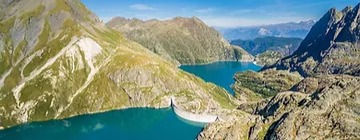Battery Breakthrough at One Sixth of the Price
- Editor OGN Daily
- Sep 6, 2022
- 2 min read
Scientists from MIT have created a new kind of battery that could provide an affordable solution for storing energy at home.

While the market for solar and wind energy sources is growing, transitioning to renewables at home isn’t easy. What happens when the sun goes in or when there’s no wind? Answer: you need a battery. After all, we all want to be able to shower - even when it’s cloudy.
Usually, lithium-ion batteries provide this backup but these are pricey, meaning that most people can’t afford to switch entirely to renewables. That could and should be about to change.
Moving away from the traditional lithium-ion model, the new battery is made from aluminium and sulfur (otherwise known as sulphur for anyone outside the US). Aluminium is the second most plentiful metal on the planet, after iron. It is also cheap. Sulfur is the least costly non-metal element. As a waste product from petrol refinement, there's currently absolutely no shortage. Better yet, the entire battery can be made for about a sixth of the cost of its lithium equivalent.
“The ingredients are cheap, and the thing is safe - it cannot burn,” says Professor Donald Sadoway, one of the researchers behind the new discovery. Lithium-ion batteries, if damaged or manufactured badly, risk catching fire, or even exploding. Because the aluminium-sulfur battery uses a salt that can’t burn, it drastically reduces this risk.
The battery is ideal for use at electric vehicle charging stations and can also power homes and small or medium-sized businesses. And, remarkably, the battery can reaching full charge in less than one minute. It can also last for long periods of time.
Sadoway is not confining himself to the small scale, however. Earlier in 2022, he was awarded the European Inventor Award for liquid metal batteries he developed with his students a few years ago for the long-term storage of renewable energy.




